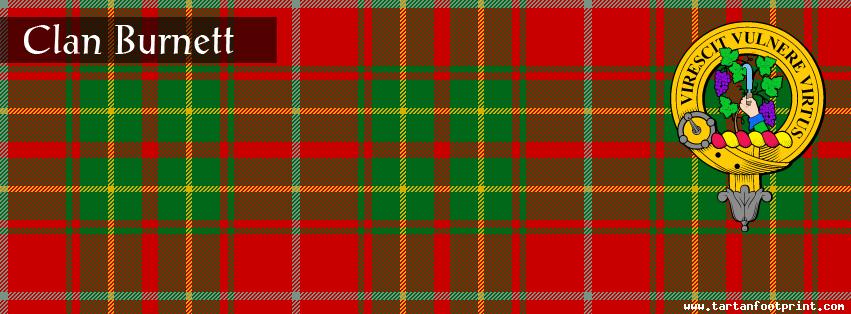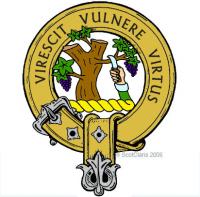
Clan Burnett
Although it is suggested that the family have Norman ancestry it is more probable that the name Burnett is a variant of Burnard from the Old English personal name Beornheard who occupied England before 1066. ‘beornheard’ translates from the Saxon as ‘bear hand’ but is sometimes also translated as ‘brave warrior’.
The family, called themselves de Bernard came to Scotland in the train of David I in the 12th century and first settled in the south, where some remained to become the Burnett's of Barns. The chiefly branch traveled to Kincardineshire, where they became the Burnett's of Leys.
Alexander Burnett supported Robert the Bruce, and was awarded land in the royal Forest of Drum, together with the title of forester. In the main hall of Crathes Castle there hangs an ivory horn called the 'Horn of Leys' which is alleged to have been presented by Bruce as a symbol of this. His great-grandson, Robert was the first designated "of Leys" in 1446.
The Burnett's have had a mixed relationship with the church; during the fifteenth century they were recorded granting lands and endowments. Later in a land dispute between Burnett and the nearby Laird of Drum the local priest Father Ambrose, was asked by Burnett to assist in negotiations but he refused. Burnett was incensed and denied the local monks fishing rights in the Loch of Leys. This caused bad blood between Burnett and the monks who cursed him. He in turn attempted to drain the loch but his son was killed during the attempt and after the tragedy the two sided were reconciled.
The Clan seat is at Crathes Castle on the north of the Dee in Kincardineshire which was founded in 1533. The castle took 40 years to build and retains the traditional L-shaped form. There is also legend of a ghost at Crathes Castle. The ghost is believed to be Bertha de Bernard a relative of the Burnett's who was allegedly poisoned (some say by Lady Agnes Burnett) after falling for one of her betrothed cousins. Bertha's father is said to have cursed the family and up to the 17th century a 'Green Lady' was seen in the castle as a portent to ill tidings in the household.
Sir Thomas Burnett was created a Baronet of Nova Scotia in 1626 by Charles I. He supported the Covenant but was also a friend and relative of the Marquis of Montrose. His son served in the last Scottish parliament and was one of the few Scottish politicians who opposed the 1707 Act of Union.
The title passed to Thomas Burnett of Criggie when Sir Robert Burnett of Leys died with no heir the title still took seven years to pass over though as it was bitterly contested. The seventh Baronet served in the Royal Scots Fusiliers during the American Wars, he was taken prisoner at Saratoga in 1777. Major General Sir James Burnett of Leys, thirteenth Baronet commanded a brigade of Gordon Highlanders in the First World War. He was frequently mentioned in dispatches and decorated with the DSO twice as well as the French Legion of Honour. His grandson is the present chief, and still lives on the family lands.







